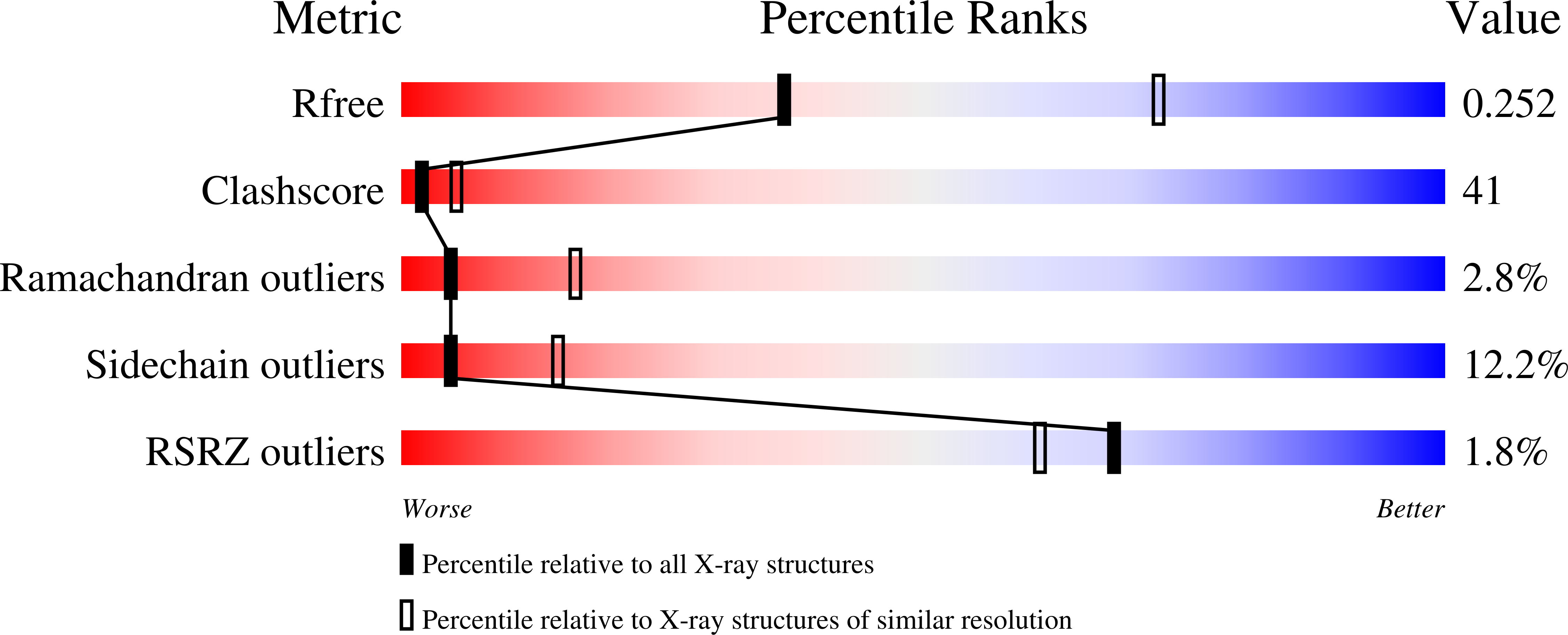Mechanisms of Product Feedback Regulation and Drug Resistance in Cytidine Triphosphate Synthetases from the Structure of a CTP-Inhibited Complex(,).
Endrizzi, J.A., Kim, H., Anderson, P.M., Baldwin, E.P.(2005) Biochemistry 44: 13491-13499
- PubMed: 16216072
- DOI: https://doi.org/10.1021/bi051282o
- Primary Citation of Related Structures:
2AD5 - PubMed Abstract:
Cytidine triphosphate synthetases (CTPSs) synthesize CTP and regulate its intracellular concentration through direct interactions with the four ribonucleotide triphosphates. In particular, CTP product is a feedback inhibitor that competes with UTP substrate. Selected CTPS mutations that impart resistance to pyrimidine antimetabolite inhibitors also relieve CTP inhibition and cause a dramatic increase in intracellular CTP concentration, indicating that the drugs act by binding to the CTP inhibitory site. Resistance mutations map to a pocket that, although adjacent, does not coincide with the expected UTP binding site in apo Escherichia coli CTPS [EcCTPS; Endrizzi, J. A., et al. (2004) Biochemistry 43, 6447-6463], suggesting allosteric rather than competitive inhibition. Here, bound CTP and ADP were visualized in catalytically active EcCTPS crystals soaked in either ATP and UTP substrates or ADP and CTP products. The CTP cytosine ring resides in the pocket predicted by the resistance mutations, while the triphosphate moiety overlaps the putative UTP triphosphate binding site, explaining how CTP competes with UTP while CTP resistance mutations are acquired without loss of catalytic efficiency. Extensive complementarity and interaction networks at the interfacial binding sites provide the high specificity for pyrimidine triphosphates and mediate nucleotide-dependent tetramer formation. Overall, these results depict a novel product inhibition strategy in which shared substrate and product moieties bind to a single subsite while specificity is conferred by separate subsites. This arrangement allows for independent adaptation of UTP and CTP binding affinities while efficiently utilizing the enzyme surface.
Organizational Affiliation:
Molecular and Cellular Biology, University of California, One Shields Avenue, Davis, California 95616, USA.























